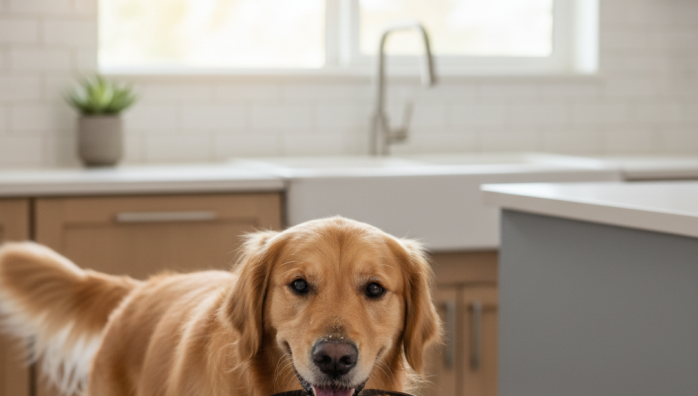Sustainable Pet Food Bowl Choices
by admin in Pet Care Basics 16 - Last Update November 23, 2025

I used to grab whatever plastic bowl was cheap and cheerful at the pet store. For years, my golden retriever, Barnaby, ate from a bright blue plastic dish that got progressively more scratched and faded. It wasn\'t until I started reading about microplastics that a little alarm bell went off in my head. I looked at those deep scratches in his bowl and wondered what tiny, unseen particles were mixing with his kibble. That was the moment I began my journey to find a better, healthier, and more sustainable food bowl for him.
Why choosing the right bowl matters more than you think
Honestly, it felt like a small thing at first—just a bowl. But the more I looked into it, the more I realized its impact. Those scratches in plastic bowls aren\'t just cosmetic; they can become breeding grounds for bacteria that are difficult to clean completely. Plus, there\'s the concern about chemicals like BPA and phthalates leaching from low-quality plastics into our pets\' food and water, especially if the bowl is left in the sun or washed with hot water. And from a bigger perspective, I couldn\'t ignore the environmental cost. How many of those cheap plastic bowls end up in landfills every year? It felt like a simple switch I could make to be a more responsible pet parent.
My journey through sustainable materials
So, I started exploring the alternatives. It was a bit of trial and error, but I learned a lot about what works for my dog and my peace of mind.
Stainless steel: the durable workhorse
My first switch was to stainless steel, and it\'s still my top recommendation for most people. It\'s incredibly durable, non-porous (so it doesn\'t harbor bacteria), and dishwasher safe. I learned quickly that not all stainless steel is created equal. I made sure to find a bowl made from food-grade stainless steel to avoid any potential for rust. It\'s not the most decorative option, but for hygiene and longevity, it’s a clear winner in my book.
Ceramic: the stylish but careful choice
I love the look of ceramic bowls; they can really add a touch of style to your home. I bought a beautiful, hand-painted one for Barnaby’s water. The key here, and this is critical, is to ensure it’s made with a lead-free, food-safe glaze. An unglazed or poorly glazed bowl can be porous or leach harmful toxins. I\'m also extra careful with it, as I did accidentally chip a previous one, which created a sharp edge and a place for bacteria to hide. For pets who aren\'t overly rambunctious, it\'s a lovely choice.
Bamboo and plant-based materials: the new kids on the block
I was so intrigued by bowls made from bamboo and other plant fibers. They feel modern, lightweight, and are often marketed as biodegradable. I tried one and it held up surprisingly well. My advice here is to do your homework. I looked for brands that were transparent about what binders they use—some use melamine, which has been a topic of debate. I ultimately found one made purely from compressed bamboo and rice husks. It\'s a fantastic, lightweight option, especially for travel.
What to look for when you\'re shopping
After all my research and testing, I\'ve developed a little checklist. It’s not just about the material, but the whole package. When I\'m looking for a new bowl, I consider:
- Food-grade safety: Is it certified non-toxic and free from harmful chemicals?
- Durability: Will it stand up to daily use and my dog\'s enthusiastic eating?
- Ease of cleaning: Is it non-porous and dishwasher safe? This is a huge one for me.
- End-of-life: What happens when it’s no longer usable? Is it recyclable like stainless steel or compostable like some bamboo bowls?
- Practical design: Does it have a non-slip base? Is it the right size and height for my pet?
Changing something as simple as a food bowl has been a rewarding step in my eco-friendly pet parenting journey. It\'s a daily reminder that small, conscious choices can make a difference for our pets\' health and the health of our planet. Of course, if your pet has specific allergies or health issues, it’s always a good idea to chat with your vet about the best materials for them.









